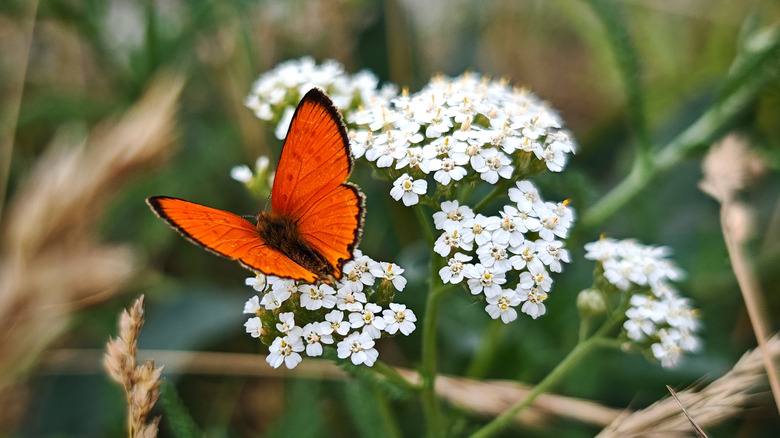
Wavebreakmedia/Getty Images
It’s not flamboyant or brilliantly-colored, but this powerhouse North American wildflower is a pollinator’s delight: Yarrow (Achillea millefolium) is a tough but pretty flower that deserves to be better known. It regularly makes the lists of the best flowers to attract butterflies to your garden, and it’s refreshingly low-maintenance. It’s a perennial wildflower that’s widespread in North America, from Alaska to Florida.
Yarrow’s umbrella-shaped clusters of flowers in white, yellow, pink, red, or purple are versatile enough to weather USDA Hardiness Zones 3 to 9. Not every one of these zones is ideal for yarrow planting in November, but if you still have six weeks or more before your area’s first frost, that’s just enough time for yarrow plants to take root and settle in before going dormant for the winter. Has that window of time already closed for your region? Don’t miss out; you can plant seeds indoors or in a greenhouse to transplant after the last spring frost .
There’s a decent number of yarrow varieties that add stunning perennial color to gardens while also drawing in butterflies and other pollinators by the drove. Across the board, yarrow of all types is low-maintenance and resistant to both pests and drought. They also make lovely cut flowers, both fresh and dried. If time is on your side, tuck some yarrow plants into your garden this weekend!
Plant and care for butterfly-tempting yarrow.

Tybycsoki/Shutterstock
Scope out a spot in your yard that gets six to eight hours of sun per day; this is ideal for yarrow. These plants actually prefer average to poor soil, as long as it’s well-draining. Soil that’s too nutritious can lead to an abundance of foliage and fewer flowers, and this also is the reason why you won’t need to fertilize your yarrow. However, adding a bit of compost to the site will kick-start each plant’s growth.
Till your planting spot to about 12 inches deep, and mix in 2 to 4 inches of compost. Space each plant 1 to 2 feet apart. Yarrow spreads enthusiastically through rhizomes, so optimal spacing is essential. Water your new yarrow plants well at first to help them become established.
Once spring arrives and brings ravenous pollinators with it, treat your yarrow to another small dose of compost, and give it a bit of extra water if your area gets less than 1 inch of rain per week. Deadheading your plants will keep the flowers coming and provide plenty of benefits for breathtaking butterflies you might see flying around your yard and garden.


Comments are closed.